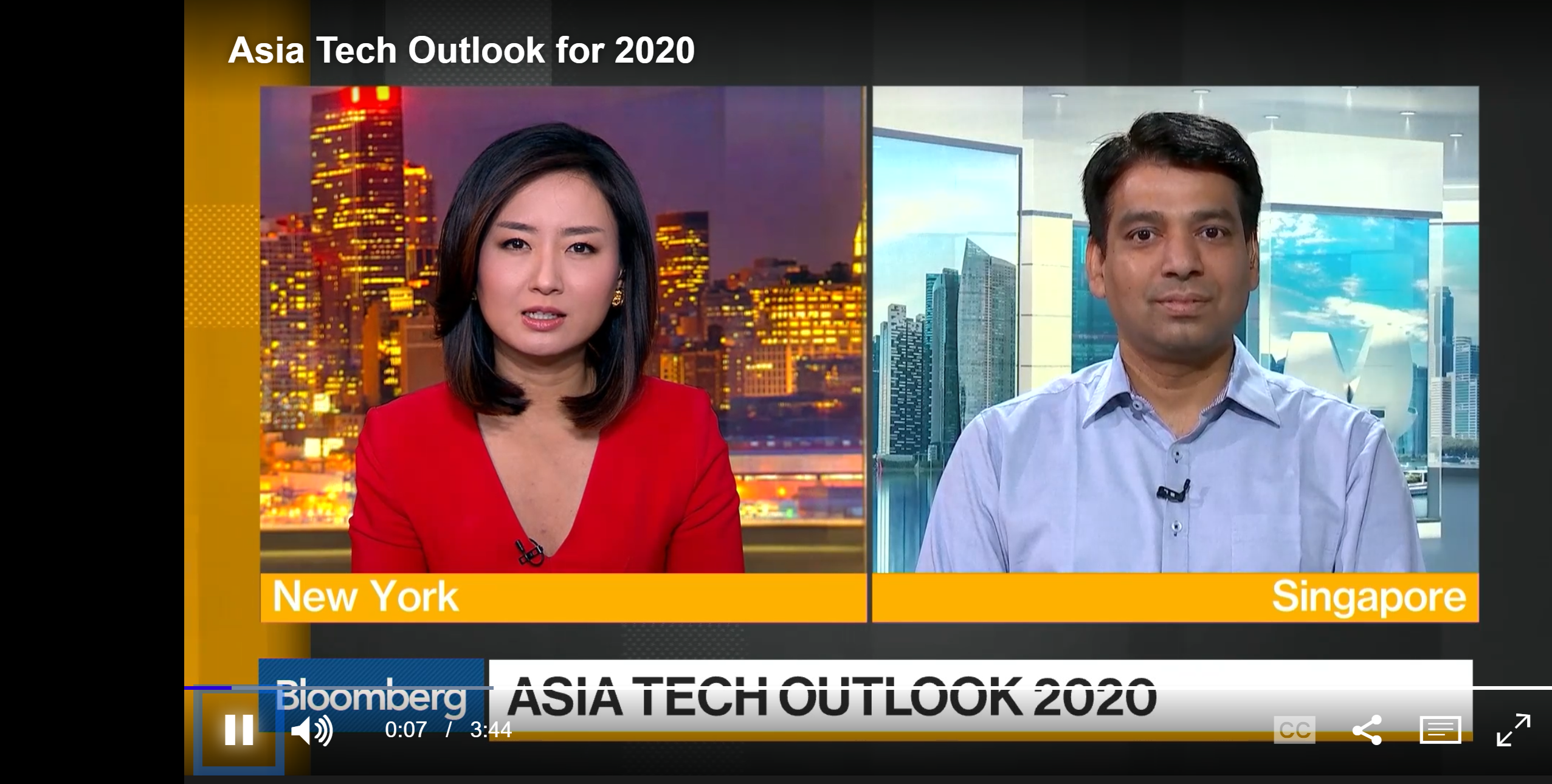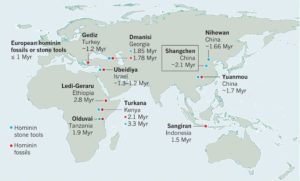What are technology trends to watch out for APAC in 2020 ?

4 tech themes we will see in 2020 :
What are the key technology themes / trends to watch out for in 2020 for consumer /enterprise space : The 4 trends i feel would be important to watch out for :
- 5G investments will start taking shape in a big way . There are still questions around business models around 5G but the basic decisions ( around spectrum ) investments will start taking shape
- O2O convergence will intensify (Online to Offline and vice versa ) in the Digital startups -Ecommerce battle will intensify as growth continues in the market ( 35% YoY growth wrt GMV). Ecommerce players will increasingly look at a convergent business model
- Consolidation in the platform economy – We will see convergence in many SE Asian markets wrt E-money/ Wallet players. Digital Banks – Some of the countries will launch/ start thinking of Digital bank licenses..
- Enterprise spending will increase – Security will start taking a lot more centrestage . both for Enterprise as well as Consumer ( esp the IoT devices )
Deep diving a bit on how these technology trends will impact APAC .
Trend 1 : 5G investment
5G discussions will pick up in APAC and we will see countries ( beyond China, Japan, Korea and Singapore ) , finalise the spectrum and business regulations around 5G. 5G Business case is still a big question mark .Many MNOs are still struggling to break even from their previous generation expendituures . Spectrum and network sharing may feature in 5G and are most suited for MNOs in developing countries, where the demand for 5G services is finite and limited. In fact, MNOs in these countries may need to share spectrum and network in order to launch 5G and regulators may mandate this to introduce 5G to their markets earlier. Some MNOs may go a step further and even divest their network altogether to focus on services. Regulation, licensing, and spectrum policy will be critical to tapping the 5G opportunity in APAC.
Trend 2 : O2O convergence
Trends in O2O convergence
a.) Overall Volumes growth –
Ecommerce becomes mainstay in APAC esp. SE Asia. Expected growth of 35% + Y-O-Y in Ecommerce GMV with the market reaching more than 50 Bn USD by GMV in 2020.
b.) Factionalization into AAT group
Investments from big boys will accelerate . Last few years have seen the AAT’s expanding into SE Asia as a major battle front We saw Alibaba increasing its stake in Lazada in 2018. Tencent has already invested in a couple of companies like SEA (which went public 2 years back), Go-jek . JD Thailand etc. Amazon entered the SE Asia market a bit late with Singapore and later Australia. Amazon is expected to be a bit aggressive with acquisitions to gain market share.
In 2020, as the players try to dominate we will see a bit more focus on Profitability.
c.) The super apps battle for “super “
As the super apps expand beyond their core cab hailing /ecommerce , I expect them to be a lot more aggressive wrt acquisitions. There may be a big play for Omnichannel i.e the digital players acquiring physical companies which gives them reach . e.g Moka being discussed to be acquired by Go-jek
d.) The revenge of the “Brick and Mortar “
Traditional brick and mortar Retailers like Matahari (Indonesia), MBK (Thailand) will increase their Online presence significantly. At the same time, we expect the Cloud first -Online brands like Pomelo, Lazada move into Retail to create Omni-channel experience.
Trend 3 : Consolidation in the Platform economy
a.) Aggressive Payments strategy
Payment space is expected to get crowded with entrants like GrabPay, Go-Pay (Indonesia) being aggressive for expansion giving the other players like Alipay, Samsung etc a big competition . Payment model will evolve – Payments will evolve with new Data analytics and services like SME /P2Plending based on Payment analysis .
b.) Lending –
Lending is emerging as a big area . So Payment companies will get into areas like Consumer lending, SME lending, Credit insurance for SMEs etc. There is a lot of untapped potential in SE Asia wrt Underbanked and Unbanked population . We will see Super apps/ Payment companies trying to leverage on their customer base and get into Lending /other Financial services a lot more aggressively.
Trend 4 : Enterprise spending revival
-
Cybersecurity – Increasing spend in Cyber security as escalation of new/sophisticated Cyber attacks
-
Cloud – Public Cloud battle intensifies with AliCloud and Azure becoming aggressive. New models ( AWS Outposts )
-
Data Security and Privacy will have a big impact on Enterprise IT spending
-
Network as a Service will be key for Service Providers esp. with SD-WAN being the central theme
-
Data Analytics spending will accelerate
a.) Cybersecurity -Increasing spend in Cyber security as escalation of new/sophisticated Cyber attacks
Digital transformation has exposed a broad attack surface for would-be belligerents. The IoT is pushing “connect-first/secure-later” products to a range of industries, as well as critical infrastructure in APAC countries. Simultaneously, cyber risk is escalating as evidenced by increasingly sophisticated malware, record-breaking DDoS attacks, and politically motivated state-sponsored threat actors.
We will see more spending from APAC CIOs to protect the enterprise with overall Spending on Security services expected to increase over 25%. Also there will be convergence of Traditional and Cyber security spending happening.
b.) Cloud – Public Cloud battle intensifies with AliCloud and Azure becoming aggressive. New models ( AWS Outposts )
While the Public Cloud will be an aggressive battle with AWS taking the lead . But in 2020 we will see AliCloud and Azure trying to be a lot aggressive. As decision making evolves and Hybrid Cloud strategy becomes important for most enterprises, we will see emergence of System Integrators as the key decision influencers in APAC. Also, we will see new use cases for Edge Computing i.e the Computing is more and more on the edge of the networks.Also, models like AWS offering Outposts will be the way to go as Cloud players tap the private Cloud market as players
c.) Data security & Privacy
GDPR in Europe and we have APAC variants like Indonesia Regulation 82/OJK , Thailand , Malaysia etc all have some variants .Data security and privacy will be a big focus for regional regulators and we will see similar initiatives from other countries.
d.) Network as a Service
The emergence of SD-WAN has helped speed-up enterprise edge virtualization. APAC Enterprises are embracing SD-WAN to achieve an agile, cost-effective hybrid WAN. The SD-WAN market entered the growth stage of the APAC market adoption curve in 2019. Managed SD-WAN—wherein the service provider (network service provider, managed service provider or value added reseller) acts as a single point of contact for procuring, installing, configuring and managing the complete SD-WAN solution (the SD-WAN appliance, software license, WAN services)—is gaining traction .This provides new opportunities for Service providers from new Overlay ( SD-WAN solution ) but also is a Threat as enterprises look for relook at their overall Data communication needs and the traditional MPLS/Internet links.
e.) Data Analytics will come to the forefront
Data analytics will also come into forefront as SMEs take the lead in spending for BD solutions esp. in verticals like Retail, Manufacturing etc.
You can watch the full interview at
https://www.bloomberg.com/news/videos/2019-12-23/asia-tech-outlook-for-2020-video
Sources /References
a.) GSMA Telco 2020 – https://www.gsmaintelligence.com/research/2019/09/telco-2020-seeking-growth-beyond-the-core/811/
b.) https://www.straitstimes.com/business/companies-markets/gojek-near-to-buying-mobile-payment-start-up-moka-for-163m
c.) https://insideretail.asia/2017/09/06/matahari-department-store-puts-more-money-into-e-commerce/
d.) https://cybersecurityventures.com/cybersecurity-market-report/
e.) https://techcrunch.com/2019/12/04/aws-outposts-begins-to-take-shape-to-bring-the-cloud-into-the-data-center/
f.) https://ajaysunder.com/challenges-and-opportunities-for-tencents/
g.) https://ajaysunder.com/chinese-tech-stocks-and-their-impact/




